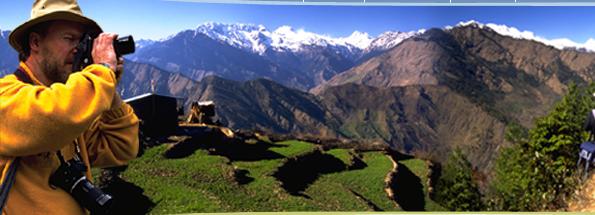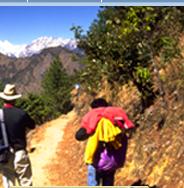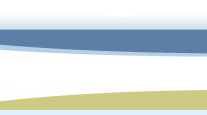| Unique among natural
heritage sites world-wide is the Sagarmatha National
Park, which includes Mt. Everest (8,848 m) and other
high peaks such as Lhotse Shar, Cho Oyu, Ama Dablam,
Pumori, Kangtega, Gyachung Kang, Thamserku and Kwangde.
Located North-east of Kathmandu, Sagarmatha National
Park is 1,148 sq km. in area and consists of the upper
catchment areas of the Dudh Koshi, Bhote Koshi and the
Imja Khola rivers. Much of the park lies above 3,000m.
Sagarmatha is rugged, with deep gorges, glaciers and
unnegotiable ice and rock faces. Locally known as the
'Khumbu', it is the home of the famous Sherpa people.
The Sherpas make a living by farming barley and potatoes
and graze their yaks in high altitude pastures. Young
Sherpas have also made their name in mountaineering
and the trekking industry has of late become the community's
economic mainstay. In 1979 the park was declared a World
Heritage Site.
Trees such as rhododendron, birch, blue
pine, juniper and silver fir are found up to an altitude
of 4,000 meters above which they give way to scrub and
alpine plants. In late spring and summer, the hillsides
around the villages of Namche Bazaar, Khumjung, Thyangboche
and Thame are a riot of colours with several species
of rhododendon in bloom. Wildlife most likely to be
seen in Sagarmatha are the Himalaya tahr, ghoral, musk
deer, pikka (mouse hare) weasel and occasionally jackal.
Other rarely seen animals are Himalayan black bear,
wolf, lynx and snow leopard. Birds commonly seen are
Impeyan pheasant, blood pheasant, snow cock, snow pigeon,
red billed and yellow billed chough, Himalayan griffin
vulture and lammergeier.
- Entry Fee Per Person Per Entry:
- For Nepalese Nationals, Free
- For SAARC Nationals, Rs. 100/-
- For Other Foreign Nationals, Rs. 1,000/-
- (Note: Entrance fee not required for children under
10 years).
Access:
All of Khumbu is road-less, all travel and exploration
must be undertaken on foot. Quick access are by helicopter
at the Syangboche and via the Lukla airstrip from where
the park head-office at Namche Bazaar is a two-day walk.
Alternative approaches are from Jiri in the south-west
and through Arun Valley in the south-east. Namche is
10 to 12 days trek on both these approaches. The best
time to visit is in October and November and from March
to May when days are warm and clear. However night temperatures
can reach zero levels. A two to three-week stay in the
park is ideal and the best areas to visit are Gokyo
Valley, Lobuche-Kala Pattar-Base Camp, Chukung Valley
and Thame valley. Travellers should come with camping,
food and fuel support to enable them to move freely
although room and board are available in most villages.
To enjoy the visit thoroughly it is best to arrange
services of guides and porters with government registered
outfitters in Kathmandu. |




